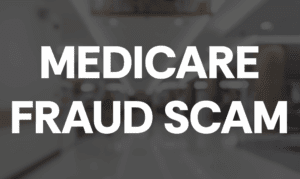Seeing well now and maintaining healthy eyes for a lifetime are the top priorities for eye doctors including John Henahan, an optometrist at Spectrum Eyecare in Peachtree City, Ga.
“Each year brings new information and studies that help us understand how our amazing visual system works,” said Dr. Henahan. Here are Dr. Henahan’s top 5 advances in eye care 2012.
1) US Glaucoma cases rising
“The prevalence of glaucoma in the United States is 22 percent higher than it was 10 years ago,” according to a report. “Researchers from Prevent Blindness America and the US National Eye Institute reported that more than 2.7 million Americans aged 40 and older are affected by this eye disease, which can damage the optic nerve and gradually lead to blindness. Prevent Blindness America joined forces with other leading vision and eye health groups to declare January as National Glaucoma Awareness Month.
2) Vision loss tied to diabetes rising
Vision loss related to diabetes increased by 20 percent over less than a decade, according to a U.S. study – a matter of concern as diabetes rates continue to rise, and hit younger and younger people.
“The nation’s diabetes problem is getting worse. Oklahoma, Kentucky, Georgia and Alabama saw dramatic increases since 1995, the study showed. The South’s growing weight problem is the main explanation according to a report by the Centers for Disease Control and Prevention.”
All diabetics should have a complete dilated eye examination with photos of the retina once per year. If blurred vision develops an eye examination should be immediately performed.
3) Dry Eye Syndrome is the most common medical eye problem
Not including the need for eyeglasses, dry eye is by far the most common eye problem, affecting nearly 20% of the population over age 40. Dry eye disease has a number of risk factors: aging, androgen deficiency, chronic environmental stress, changes in blink patterns, autoimmune disease, systemic drugs, corneal nerve damage from eye surgery, contact lens wear, and preservative toxicity of topical medications.
Treatment of dry eye is designed based upon the specific type of dry eye and should employ a planned approach that starts with mild interventions that gradually become more aggressive until symptoms are controlled eliminated. Treatment may include artificial tears, nutritional supplements (like fish oil), prescription medications and/or minor procedures like punctal occlusion that help prevent tears from draining from the eye too quickly.
4) OCT Eye Exam continues to revolutionize eye care
OCT is a high resolution imaging technology that allows MRI like views of the various tissues in the eye. 2012 saw major advances in software that allows for sophisticated analysis of the eye. These advances improve our ability to diagnose eye diseases like glaucoma and a large number of retina problems.
This technology even can even uncover vision problems before they cause irreversible damage. Dr. Henahan reports the case of a woman who came to his office for a routine eye exam with no vision complaints. Dr. Henahan noted that she had trouble seeing all the letters on the 20/20 line. An OCT eye exam showed that she was about to develop a macular hole, which can result in permanent vision loss. “The OCT allowed me to see what was happening and get her to a retina specialist for timely treatment,” said Dr. Henahan.
5) Contact lens wearers more likely than ever to avoid reading glasses.
Advanced multifocal contact lens designs continue to reach the market. These designs are more likely than ever to minimize or eliminate reading glasses. “Most contact lens wearers do not like glasses of any kind, so being able to reduce their dependence on reading glasses greatly increases the patients satisfaction with wearing contact lenses”, reports Dr. Henahan. “It can take some time, but I am able to successfully fit multifocal contact lenses about 85% of the time.”
With the increasing incidence of diabetes, glaucoma and dry eye, it is more important than ever to get routine eye exams. Generally, once per year if you are over age 50, diabetic or have a family history of eye disease. Younger people without health problems and perfect vision can have an exam once every two to three years.
Dr. John Henahan is a fellowship trained doctor of optometry practicing and living right here in Peachtree City with his wife and two sons. You may call his office at 770-487-0667 or visit him on the web at www.speceye.com.












Leave a Comment
You must be logged in to post a comment.